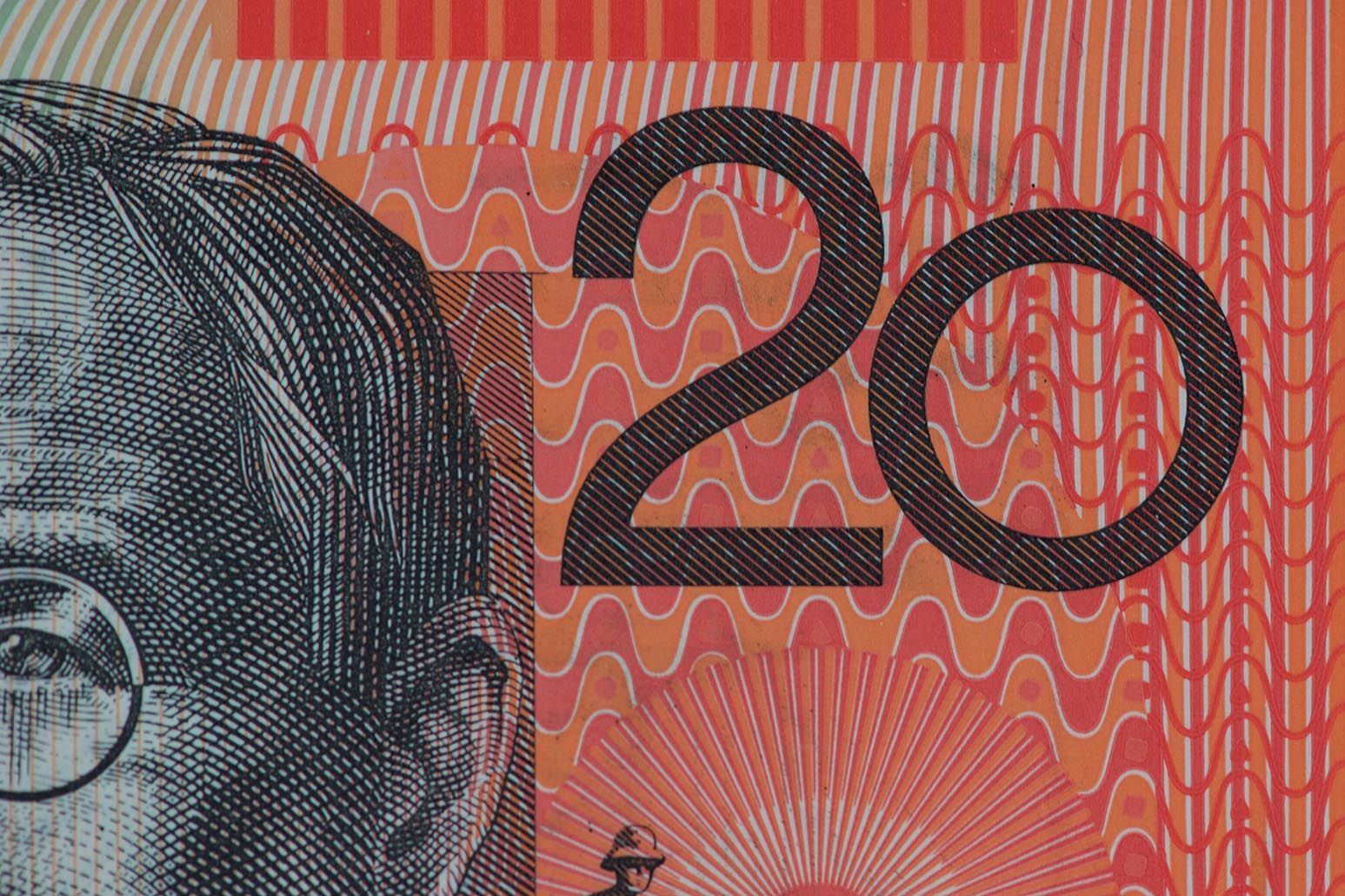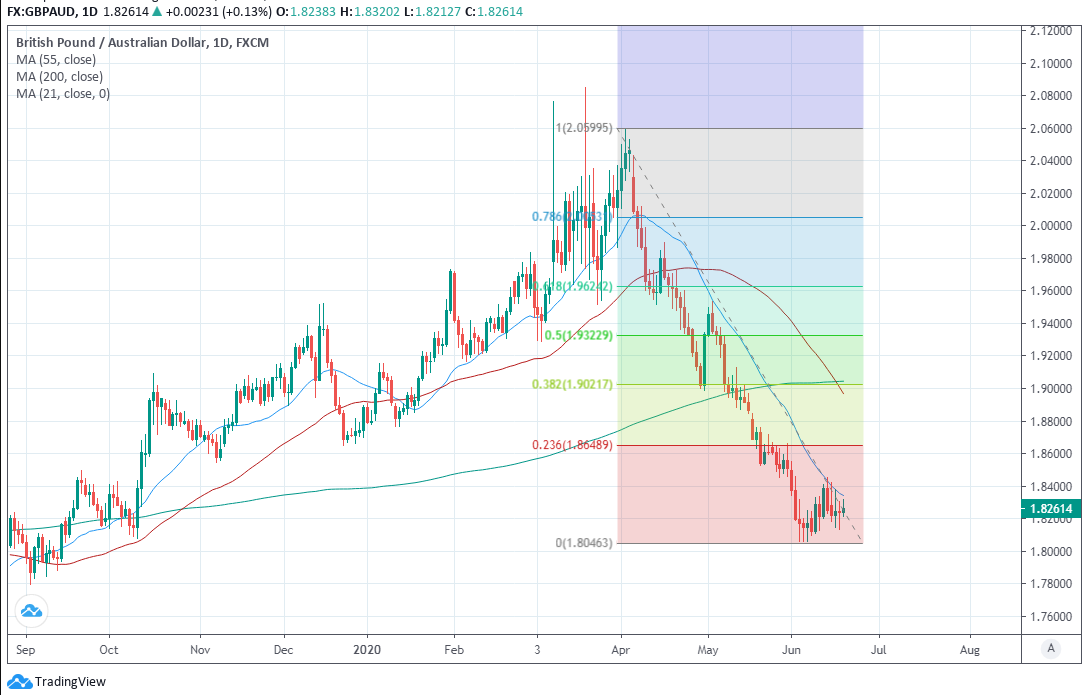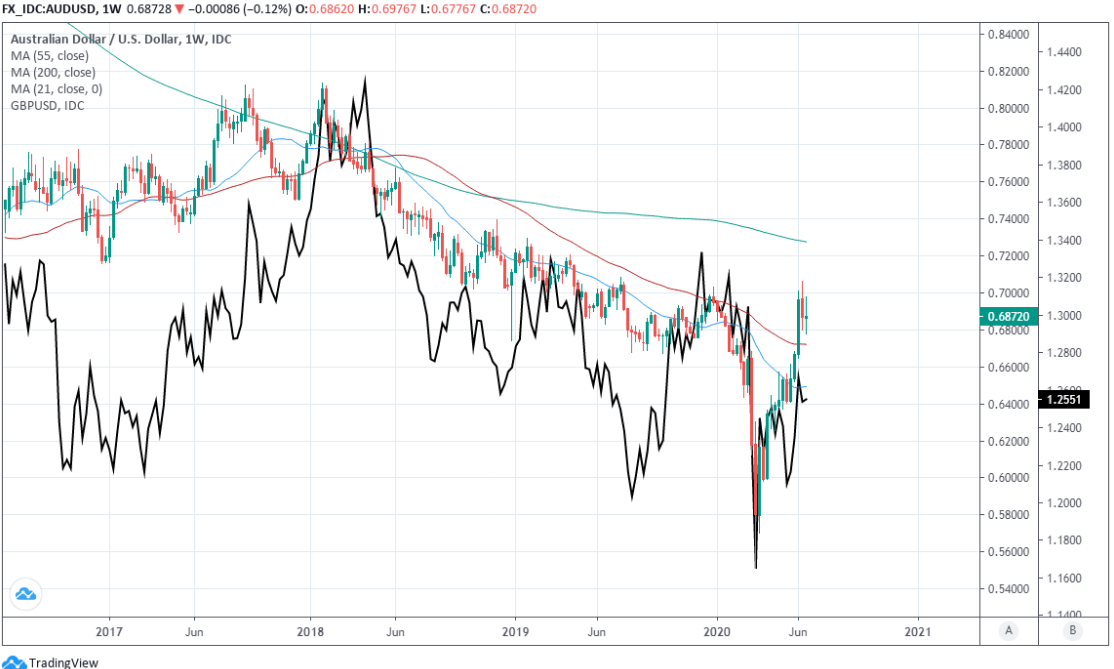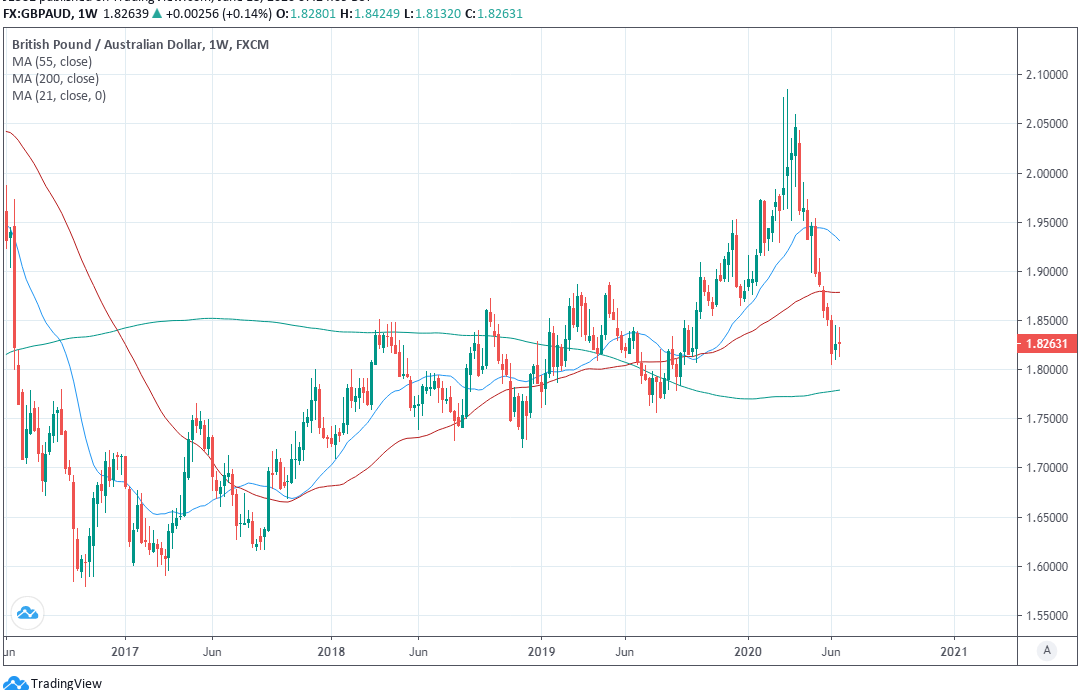Pound-Australian Dollar Rate: New Lows Forecast for this Summer by Leading Aussie Lender
- Written by: James Skinner
- GBP/AUD forms short-term bottom and poised for rebound.
- As BoE policy decision looms, after Westpac cuts forecasts.
- GBP/AUD seen falling to new lows after short-lived rebound.

Image © Adobe Images
Achieve up to 3-5% more currency for your money transfers. Beat your bank's rate by using a specialist FX provider: find out how.
The Pound-to-Australian Dollar exchange rate downtrend will resume in the coming months, ensuring new lows are seen by year-end according to new Westpac forecasts, but the severity of recent losses means that even the Bank of England (BoE) might now struggle to push Sterling lower in the short-term.
Sterling is set to continue lagging the Aussie in a shallower recovery of risk assets during the second half of the year, leading to a steady but progressive grind to new lows for the Pound-to-Australian Dollar rate.
"Of course there will be disappointments and missteps (there are genuine fears for a wide spread second wave in the northern winter; the developing world is already facing a surge in new cases; and there are already reports of rising hospital admissions in some southern states in the US) but, with official sector support and reasonable caution, we consider it unlikely that a sustained reversal in confidence will eventuate this year. Accordingly we have significantly lifted our target for the AUD," says Bill Evans, chief economist at Westpac.
New forecasts from Australia's oldest lender put the Pound-to-Aussie rate on course for 1.7857 by September and its lowest since the same month of 2019, followed by a decline to 1.7543 in time for year-end. Both are downgrades coming from 1.9230 and 1.8867 respectively.
Above: Pound-to-Australian Dollar rate shown at daily intervals with Fibonacci retracements of April decline.
This is after AUD/USD forecasts were upgraded by more than they were for GBP/USD, with the Aussie now seen hitting 0.70 against the greenback by the end of September and 0.72 in time for year-end. AUD/USD forecasts were upgraded from 0.66 and 0.68 respectively.
Sterling and the Aussie are entering the a new global economic cycle that would always favour commodity currencies but the GBP/AUD rate has already fallen -14% from its peak in early April while GBP/USD is tipped to find support near to current levels and AUD/USD has recently turned lower. This indicates only limited downside for the Pound-to-Australian Dollar rate in the coming days.
A GBP/USD rate that falls from 1.2550 Thursday to 1.2428, as some technical analysts say it could do, would only drag the Pound-to-Aussie rate down to 1.8143 without a fresh increase in AUD/USD from its current 0.6850.
But either fresh AUD/USD losses or a 'buy the rumour and sell the fact' rally in Sterling after Thursday's BoE decision would be enough to lift GBP/AUD.
"Dips lower have found initial support at 1.2468/86 ahead of the short term uptrend at 1.2428, which is expected to hold the downside," says Karen Jones, head of technical analysis for currencies, commodities and bonds at Commerzbank, of GBP/USD. "AUD/USD has eased back to initial support offered by the.6774 the 5th February high and has seen an initial rebound...we suspect that it will struggle to again overcome the 7031/62 resistance."
Above: AUD/USD rate alongside GBP/USD (black line) with both shown at weekly intervals.
The BoE is widely expected to announce a £100bn increase in its bond buying programme Thursday in order to ensure the smooth functioning of the government bond market. That would be swamped by new coronavirus-related issuance if not for the BoE stepping in to soak it up on a supposedly temporary basis, although it's far from assured that the BoE will go as far as markets expect.
And if a smaller-than-expected increase in the BoE bond buying target was to lift GBP/USD back toward the 1.2684 level flagged by Jones the Pound-to-Australian Dollar rate would rise potentially as far as 1.8521 without an offsetting increase in AUD/USD. But these moves would ultimately give way to fresh losses later in the summer if forecasts from Westpac and others pan out.
"Two drivers are starting to have a direct impact on currency markets: debt dynamics and balance sheet expansion. Fiscal room, debt dynamics and balance sheet expansion are all intertwined. Those with more fiscal room may see their economies recover faster than those with larger debt overhangs, without resorting to even larger balance sheets, thus allowing their currencies to outperform," says David Bloom, head of FX research at HSBC, who forecasts Pound-to-Aussie fall to 1.77 by September followed by 1.71 in time for year-end. "The larger the balance sheet expansion, the greater the creation of local currency reserves by the central bank. The greater the creation of reserves, the larger the increase in supply of that currency."
Above: Pound-to-Australian Dollar rate shown at weekly intervals with 200-week average in green.
The BoE has been buying close to £14bn of government debt per week since the coronavirus came along, which is close to £60bn per month and equal to around 2.6% of GDP. But the UK government borrowed even more than that during the month of April, with the total having come in at £62.1 after HM Treasury took unprecedented action to limit the longer-term damage done to the economy by the 'lockdown' used to contain the coronavirus.
However, with £200 bn of purchases already announced while the market consensus favours a 2020 government borrowing requirement of £270bn the BoE could technically ensure "smooth market functioning" without announcing the full £100bn that investors are expecting.
This might lift Sterling on Thursday and into the weekend but it would do little to alter the medium-term outlook for a currency that is fast approaching its 200-week moving-average at 1.7791 on the charts.
"We believe FX markets will focus on fiscal positions as a key determinant of fortunes. The UK’s fiscal starting position is among the least healthy in G10 and faces the added risk of needing sizable external financing. This is on top of the ever-looming Brexit risk aforementioned. We think the GBP is vulnerable," Bloom says."AUD is well-placed to benefit from a shift towards fiscal policy as the main tool for providing economic support given a low starting level of government debt, especially compared to the big four (USD, EUR, JPY & GBP)."







